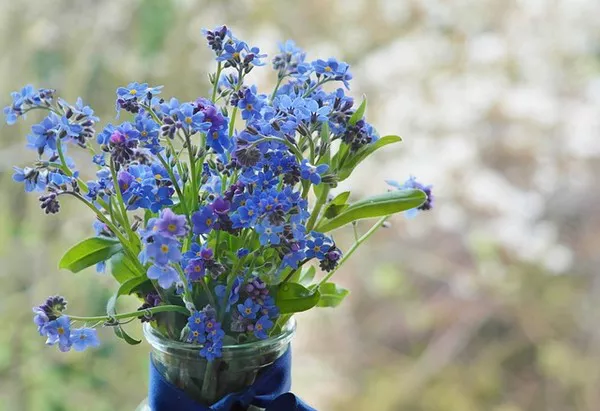Flowers, beyond their aesthetic appeal and fragrant allure, have long served as messengers of emotion, cultural significance, and hidden messages. Delving into the intricate language of flowers reveals a rich tapestry of meanings that transcends linguistic barriers and spans centuries of human history. From ancient civilizations to modern-day expressions of sentiment, the symbolic power of flowers persists, offering a nuanced vocabulary for conveying emotions, sentiments, and intentions.
Origins of Floral Symbolism
The practice of attaching meaning to flowers dates back to antiquity, with evidence of floral symbolism found in the art, literature, and folklore of diverse cultures worldwide. In ancient Greece, for example, the goddess Flora was revered as the deity of flowers, fertility, and springtime, laying the groundwork for the association of flowers with renewal, growth, and beauty. Similarly, in ancient Egypt, flowers such as the lotus held profound spiritual significance, representing rebirth and the cycle of life.
Victorian Era: The Golden Age of Floral Language
The Victorian era is renowned for its elaborate and codified language of flowers, often referred to as floriography. Popularized in the 19th century, this intricate system assigned specific meanings to various blooms, enabling individuals to communicate sentiments discreetly through floral arrangements. From courtship to condolences, every occasion was imbued with symbolic significance, with bouquets serving as silent messengers in a society bound by strict social conventions.
Key Symbols in Floral Language
While the meanings associated with specific flowers can vary across cultures and contexts, certain blooms have endured as enduring symbols of universal themes and emotions:
Roses: Perhaps the most iconic of all flowers, roses have a rich symbolism that varies by color. Red roses traditionally signify love and passion, while white roses symbolize purity and innocence. Yellow roses convey friendship and joy, while pink roses represent admiration and gratitude.
Lilies: Revered for their elegance and purity, lilies are often associated with themes of renewal, rebirth, and transcendence. In Christian iconography, the lily is a symbol of the Virgin Mary’s purity, while in Eastern cultures, it represents enlightenment and the unfolding of spiritual consciousness.
Forget-Me-Nots: True to their name, forget-me-nots symbolize enduring love, loyalty, and remembrance. These delicate blue flowers hold a poignant significance in romantic gestures and acts of commemoration, serving as a heartfelt reminder of cherished memories.
Cherry Blossoms: In Japanese culture, cherry blossoms, or sakura, symbolize the fleeting beauty of life and the transience of existence. Associated with the concept of mono no aware, or the pathos of things, cherry blossoms evoke a sense of wistfulness and appreciation for the ephemeral nature of beauty.
Daisies: With their cheerful demeanor and simple beauty, daisies symbolize innocence, purity, and childlike wonder. Often used in bouquets to convey sentiments of friendship and youthful joy, daisies evoke a sense of optimism and light-heartedness.
Modern Interpretations and Cultural Variations
While the Victorian language of flowers provided a standardized framework for communication, contemporary interpretations of floral symbolism are influenced by cultural diversity, personal preferences, and evolving social norms. In some cultures, certain flowers may carry negative connotations or superstitions, shaping the way they are used and perceived in floral arrangements.
For example, while white lilies are commonly associated with purity and sympathy in Western cultures, they may symbolize death and mourning in some Eastern cultures. Similarly, while red roses are universally recognized as symbols of love and romance, the meanings attributed to other colors of roses may vary across different regions and traditions.
Moreover, the rise of floral trends such as sustainability, seasonal sourcing, and eco-conscious practices has led to a renewed appreciation for native blooms and indigenous flora. From farm-to-vase movements to botanical-inspired weddings, contemporary floral design embraces the beauty of nature while honoring local ecosystems and cultural heritage.
Expressing Emotions Through Flowers
In an era dominated by digital communication and fleeting interactions, the timeless art of floral gifting offers a tangible expression of emotion and connection. Whether celebrating milestones, offering condolences, or simply brightening someone’s day, the careful selection of flowers allows individuals to convey sentiments with depth and sincerity.
Beyond traditional occasions such as weddings and funerals, flowers are increasingly incorporated into everyday rituals and gestures of kindness. From sending a bouquet to a friend in need to adorning a workspace with fresh blooms, the presence of flowers has been shown to uplift moods, reduce stress, and foster a sense of well-being.
Conclusion
Flowers have long served as potent symbols of human emotion, cultural heritage, and natural beauty. From ancient rituals to modern expressions of sentiment, the language of flowers continues to evolve, offering a timeless means of communication in an ever-changing world. Whether conveying love, gratitude, or remembrance, the power of floral symbolism transcends language barriers, inviting us to pause, reflect, and appreciate the profound connections that unite us all.


